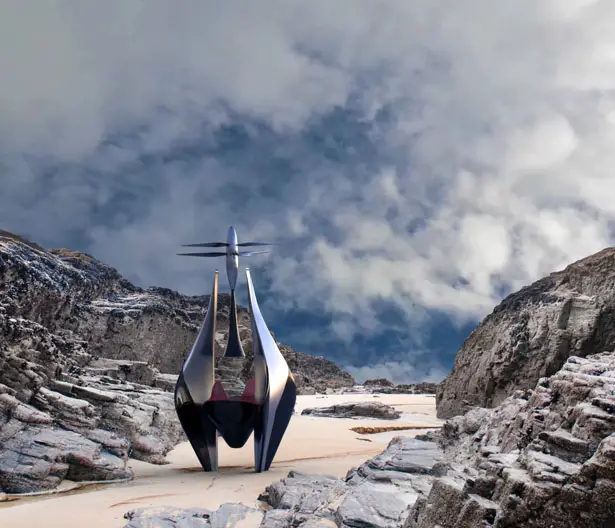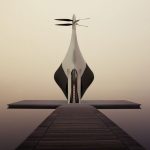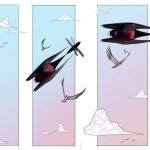Beyond eVTOL concept was one of three selected projects supported by Range Rover in a collaboration project between Land Rover and the Royal College of Art. Range Rover generously fabricated a 1/10 scale model.
The Range Rover Beyond concept investigates the future of personal aerial mobility. The context of the project is optimistic. Set in 2035, the native forest canopy of Earth would have doubled in size. An initiative led by Foundation Earth and Rainforest Earth Network would have halted deforestation. This massive reforestation effort would have stemmed climate change, biodiversity loss, prevented further diminishment of critical ecosystems, and created jobs. The revived garden planet would owe its overwhelming success too several changes in our society.
Between 2018 and 2035 four milestones would have been achieved, transforming our individual lifestyles and modern society as a whole. Robotic workforces, embedded technology, fractal cities, and the release of commercially available electric take-off and landing (eVTOL) vehicles would have made it possible for us to lead a flexible work/play lifestyle.


By 2035, 90% of the workforce would be robots. Ranging from basic manufacturing to logistics and more complex service oriented jobs. However, these robots would have to pay taxes, as suggested by Bill Gates. Thanks to freedoms offered by having a digital avatar many people would leave the confines of cities, migrating to the countryside to enjoy the perks of the great outdoors. Over-crowding and uneconomical housing prices would be other factors that would have led to many leaving the city. Cities would consist of autonomous hubs of commerce.
Embedded technology allows individuals to conduct business from home. Thanks to this, people could lead a flexible work/play lifestyle. They could work from the comforts of their lounge, whilst their virtual self would be attending a high profile business meeting in a digital boardroom. Embedded technology could be split into two categories, implanted and wearable. These are already exists in today’s world, such as, Anthony Antonellis RFID Chip embedded in his arm and Emotiv’s EPOC Headset wearable.


Architecture would have transformed. Now with an emphasis towards un-tampered nature; taking inspiration from traditional Indonesian tree houses. These domains would be self-sufficient, using solar power to provide energy and micro hydroponic facilities to feed the inhabitants.
Luxury would be security, comfort and freedom, only accessible to a particular individual. Freedom of mobility would be a luxury that is highly sought after. Mobility freedom in 2035 is demonstrated through eVTOLs, just like Futuristic Range Rover Beyond eVTOL by Fenton Robathan, they make the inaccessible accessible. It gives reason to Treehouse architecture as it is inaccessible to everyone except the resident and the invited.
More images of Futuristic Range Rover Beyond eVTOL Concept:




The market for autonomous flying cars – also known as eVTOL aircraft, air taxis or personal air vehicles – could amount to nearly $1.5 trillion by 2040, according to a research study conducted by Morgan Stanley Research. Passenger travel is expected to account for most of the market in 2040, amounting to $851 billion.
Range Rover, once a car manufacturer would produce their own eVTOLs, boasting the brand ethos – Above and Beyond – making regions previously inaccessible accessible. Unlike other eVTOLs, this wouldn’t be a service but a personal vehicle that the user owns, giving them the luxury to go wherever they desire at their convenience. The Range Rover Beyond utilizes a hybrid powertrain consisting of a small solid-state battery and a larger hydrogen fuel cell, extending the flight-time and reducing the overall mass of the aircraft. It does not require high maintenance, unlike helicopters, and is manufactured from light, cheap materials such as foam and composites. To further the end life of the Range Rover Beyond eVTOL, it could be produced from sustainable bioplastics and composites that can be recycled like chopped matt carbon fiber. Unlike traditional cars, they do not possess massive capital risk and are easier to manufacture, they do not have hundreds of components. Currently, most eVTOLs possess a maximum of 20 components including motors, propellers, battery, controls and seat. These vehicles are operated 100% through software rather than hardware further improving the product lifespan.








Looks like the 1950s POGO type X planes then just revised, unique, need Cargo, MedEvac models 2